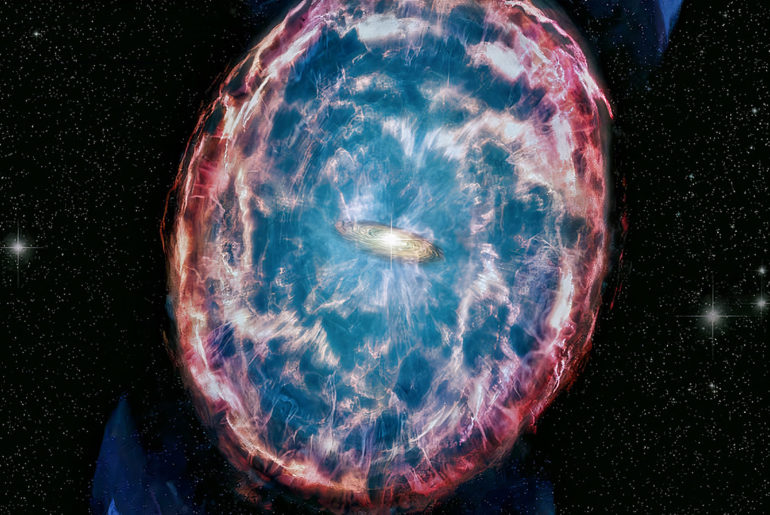
NASA’s Chandra X-ray Observatory has been gathering data on the kilonova – a powerful event that occurs when two neturon stars merged – associated with GW170817 since shortly after it was first detected in gravitational waves by the Laser Interferometry Gravitational-wave Observatory (LIGO) and Virgo on August 17, 2017. This was the very first cosmic event where both gravitational waves and electromagnetic radiation, or light, were detected.

The data being investigated provides scientists with critical information about the physics of neutron star mergers and related phenomena, while using observations at many different parts of the electromagnetic spectrum. NASA’s Chandra X-ray Observatory is the only one still able to detect light from this rarely observed cosmic collision more than four years after the original event. Astronomers believe that after neutron stars merge, the debris generates visible and infrared light from the decay of radioactive elements like platinum as well as gold, and this burst of light is called a kilonova.
- POWERFUL TELESCOPE FOR ASTRONOMY BEGINNERS: The AstroMaster 114EQ delivers sharp optics, a stable equatorial mount, and smooth manual controls, making...
- HIGH-QUALITY 114MM OPTICS: Enjoy views through the 114mm (4.5”) Newtonian reflector, which features high-quality aluminum and SiO₂ coatings and...
- SMOOTH, ACCURATE POINTING: Effortlessly aim and center your target using the two slow-motion control knobs for right ascension and declination whether...
The fact that the X-rays stopped fading quickly was our best evidence yet that something in addition to a jet is being detected in X-rays in this source. A completely different source of X-rays appears to be needed to explain what we’re seeing. This would either be the first time we’ve seen a kilonova afterglow or the first time we’ve seen material falling onto a black hole after a neutron star merger,” said Joe Bright, co-author from the University of California at Berkeley.






